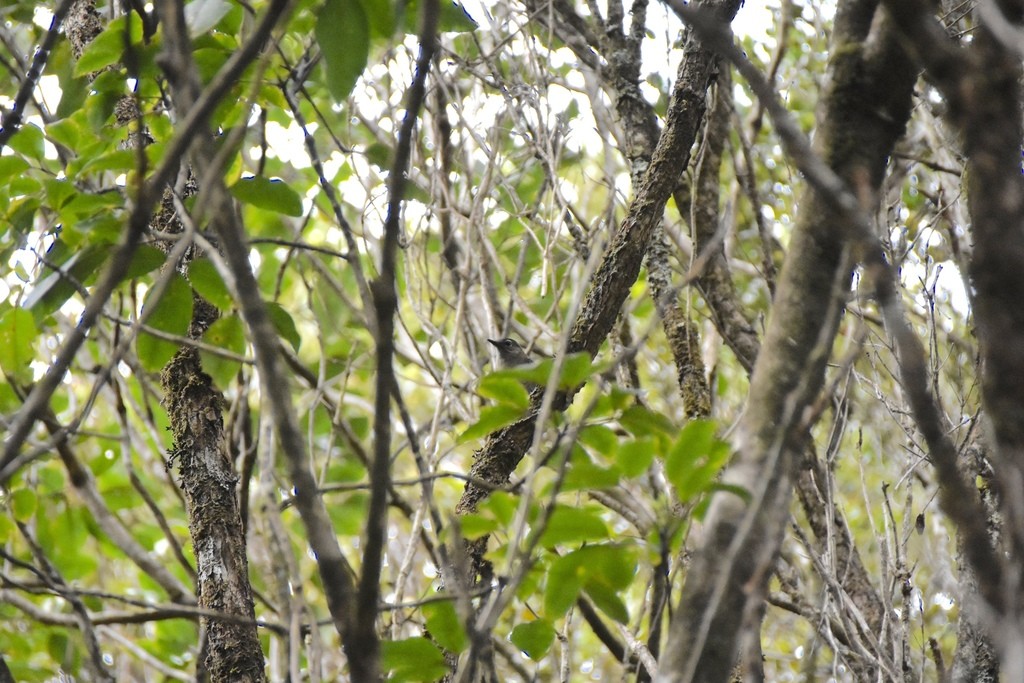Puaiohi
A species of Typical solitaires and hawaiian thrushes Scientific name : Myadestes palmeri Genus : Typical solitaires and hawaiian thrushes
Puaiohi, A species of Typical solitaires and hawaiian thrushes
Botanical name: Myadestes palmeri
Genus: Typical solitaires and hawaiian thrushes
Content
Description General Info
 Photo By sacketlc , used under CC-BY-NC-4.0 /Cropped and compressed from original
Photo By sacketlc , used under CC-BY-NC-4.0 /Cropped and compressed from original Description
The plumage is mostly nondescript, with slaty-brown upperparts and a light gray breast and belly below. Birds have a black bill and pinkish feet. A white eye ring is also fairly prominent and helps distinguish this bird from the other Hawaiian thrushes. Males and females are highly similar in appearance. Juveniles show a pattern transitioning from a spotted whitish-buff above to a scalloped gray-brown below. 
Size
13 - 23 cm
Life Expectancy
11 years
Nest Placement
Tree
Feeding Habits
Puaiohi primarily eats fleshy native fruits, along with insects, snails, and various invertebrates. It forages for food using specialized behaviors, and may exhibit unique dietary preferences that distinguish it from other species.
Habitat
The puaiohi primarily inhabits wet montane forests with high rainfall, preferring regions with steep-walled ravines and stream valleys. These densely vegetated areas are composed of native flora such as koa and ‘öhi‘a trees, along with various other species like ‘öhi‘a hä and ‘ölapa. The species has specific habitat requirements for its food supply and nesting, often found near small streams within robust forest ecosystems. Although formerly present in mesic forests now dominated by introduced plants, puaiohi is currently restricted to wetter habitats at elevations of about 1,050–1,300 meters.
Dite type
Frugivorous
General Info
Feeding Habits
Bird food type

Fruit
Distribution Area
Historically, this species has always been considered rare, favoring forested ravines above 1,050 metres (3,440 ft). Puaiohi are restricted to the center and southern parts of the Alakaʻi Wilderness Preserve on the Hawaiian island of Kauai. Seventy-five percent of the breeding population occurs in only 10 square kilometres (3.9 sq mi) of forest. 
Species Status
According to recent data, population estimates range from 414-580 birds, and have remained somewhat stable since 1973, although a study published in 1986 estimated a population of approximately 100-125 birds. Puaiohi populations are vulnerable to drought, hurricanes, and mammalian predation of both eggs and young. Avian malaria also affects many birds, but a few birds have shown some resistance. (C. Atkinson, USGS, unpublished data). Feral pigs and goats also negatively affect populations of birds by degrading habitat, as has competition from many invasive plants and animals. The puaiohi was added to the United States Federal Endangered Species List on March 11, 1967. In 1995, a captive breeding program was established. Some birds from this program were being taken back to the Alakaʻi to supplement the wild population., though this program has been liquidated and released after inbreeding depression was observed in the captive population. 